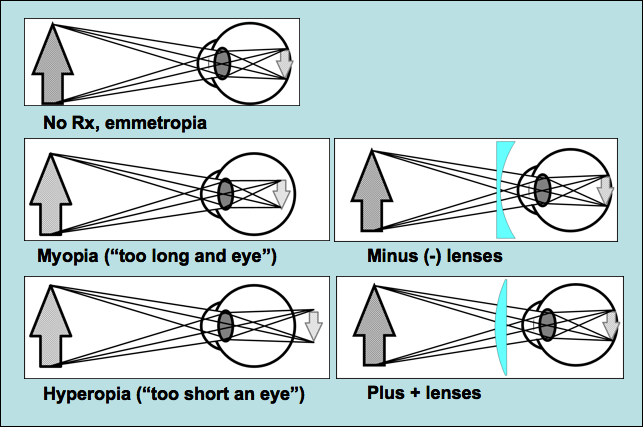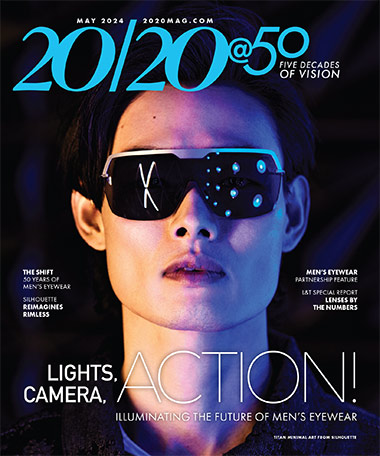If the patient has no refractive error or does not need glasses, refractive condition is called emmetropia or normal vision. If the Rx is minus, the patient is myopic (near sighted), the image is focused in front of the retina and requires minus lenses to move the image backwards onto the retina.
 |
Minus lenses are more curved on the back than the front, thinner in the center than the edge. For plus Rxs, the patient is hyperopic (far sighted).An image is focused behind the retina, lenses more curved on the front than the back, thinner at the edge than the center, and move the image forward onto the retina.
When the Rx is a sphere only and has no cylinder value the eye only needs one power for correction in all meridians. However, most Rxs (about 70 percent) have a cylinder value and are astigmatic. Therefore lenses will have two different powers; arranged perpendicular to each other to correct the
two powers that are needed by the eye. The cylinder axis is the orientation of the two powers (1 to 180 degrees). If there is a cylinder power, there must be an axis. An astigmatic prescription may be any combination of plus, plano or minus powers.










